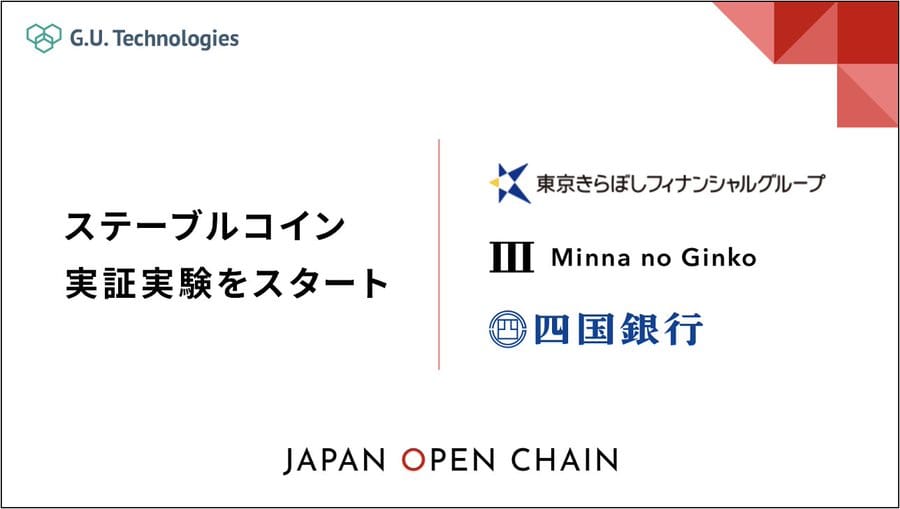
Tokyo-based web3 infrastructure specialist, GU Technologies, has announced it is starting work on a proof-of-concept, developing a platform for financial institutions to issue stablecoins that comply with Japan’s Payment Services Act. Its partners on the project are three Japanese banks, Tokyo Kiraboshi Financial Group, Minna no Bank and The Shikoku Bank.
The experiment will allow each bank to issue its own asset-backed stablecoin on the Japan Open Chain. This public blockchain is operated in compliance with Japanese law, and is fully compatible with Ethereum, allowing the stablecoins to be used in existing wallets such as MetaMask.
Initial focus will be on stablecoin issuance and remittance processing, with additional assumed use cases including as a credit/debit card alternative for online payments, web3 payments, trade-in blockchain-based digital securities, and usage as community currency for geographical or special interest groups.
The project aims to address deficiencies such as slippage in algorithm-based stablecoins and lack of trust in “pseudo-stablecoins” or those without assets to back them up. Following last years collapse of the Terra ecosystem, Japanese crypto exchanges are currently prohibited from listing foreign-issued stablecoins, although it is believed that this ban may be lifted in 2023.
It is also envisioned that Japan’s revised Fund Settlement Act, expected to be enforced by June this year, will open up the possibility for Japanese financial institutions to issue stablecoins both in yen and other world currencies. Therefore GU Technologies believe that their compliant platform could represent an opportunity for the country to become a global leader in settlements using stablecoins.

The Japan Open Chain operates a proof-of-authority (PoA) consensus algorithm, and is currently co-operated by six validators, including Minna Bank, Kyoto University of the Arts and GU Technologies, which developed the platform and manages the consortium.
It is currently in phase 1 beta testing and can reportedly process over 1,000 transactions per second. Phase 2 is expected to see validator numbers increase to 21 in order to improve decentralization and phase 3 will open the chain for global public access.
It looks like all systems go for blockchain-based digital payments in Japan, as not only will this Japan Open Chain initiative enable the creation of private stablecoins, but the Bank of Japan’s ongoing development of a digital yen CBDC is set to enter a pilot stage in April.
Exciting times ahead in the Land of the Rising Sun, which we shall continue to observe with interest.

